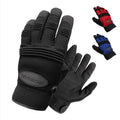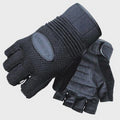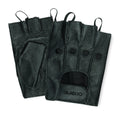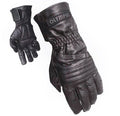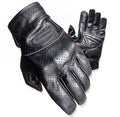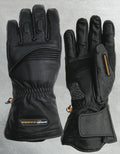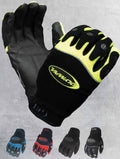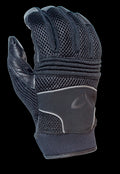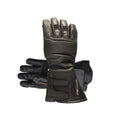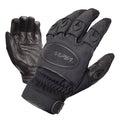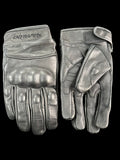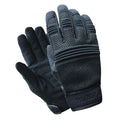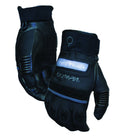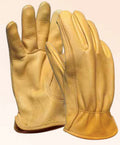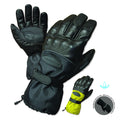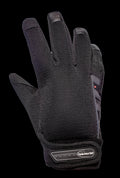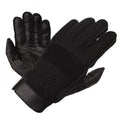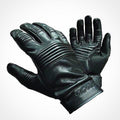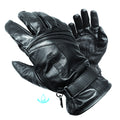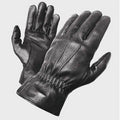Long Distance Motorcycle Riding Tips (Part 1) – Planning
Posted by ROGER HEUMANN
Now that spring is almost here, it seems like a good time to revisit the topic of long distance riding.
If you’re planning your next motorcycle trip, here are distance riding tips from expert rider and blog contributor Marilyn Elmore Bragg to help you get ready.
Note: This is Part 1, of a 3-Part Series on long distance motorcycle riding.
Long Distance Motorcycle Riding Tips: Part 1 (Planning)
Take a good look at Marilyn’s sportster above … all packed and ready to hit the road …
Let’s start with an overview of 5 key factors to consider when planning your trip.
-
Choose The Right Motorcycle for Your Journey
Most folks who are riding long distance do so with the “TOURING” motorcycle. However, touring bikes are not the only choices out there, even for distance riding — sport bike, adventure bike, duel sport bike — all can make for an enjoyable adventure.
Touring bikes usually allow a rider to take high mileage tours each day, while the smaller motorcycle is better suited for the rider with a leisurely and flexible schedule.
- 750cc– Not as much horsepower, but still has plenty of room for higher speeds. Gas efficient, especially if on a budget. Normally a great bike for shorter lighter or beginning riders. Overall an excellent and efficient cruiser that is more easy to handle because of its low to the ground profile and lighter but substantial frame.
- 1100cc- Typically one of the more popular engine cruiser sizes.This larger engine offers reliable and impressive top speed when you need just a little extra juice. This bike can keep going for hours on end down an endless stretch of road at cruising speed.
-
Keep Riding Style in Mind
When it comes to bike choice, keep your own riding style and preferences in mind.
There are very good reasons for choosing a touring bike. Typically heavy in nature, this motorcycle has a rather large engine displacement, and is outfitted with a fairing, saddlebags as well as several foot placement choices.
- A heavy bike with a large displacement engine is easier to maneuver down an interstate and is more forgiving and stronger against the wind. Don’t forget, in interstate riding, you have the crosswinds of the empty spaces the road travels through; you have the wind currents from passing traffic, be they large semi trucks, or a long line of cars. A large displacement engine can move you away from hazardous traffic situations, or power you through a strong head wind if necessary.
If you choose a lighter motorcycle, keep in mind that a smaller engine works harder to travel on Interstate roads. The higher speed limits, the truck traffic, the vibration of the engine and road are all elements that contribute to rider fatigue.
-
Seats, Foot Placement and Other Considerations for Long Haul Comfort
In addition to your choice of motorcycle, how you set it up is also an important and decisive factor in your abilities to ride long distances each day.
Get to know your options for comfort such as seats, fairings, and foot peg placements. Being able to move legs and reposition feet forward and back allow the rider to change how he/she sits in the saddle, stretch the back and legs and generally get some blood moving in extremities that need it. (More on this in our next installment).
-
Route Planning and Itinerary: Scenic roads, or Interstate?
Let’s face it; most of us aren’t riding an Iron Butt adventure. We are riding because we love the motorcycle. We want the adventure of daily riding coupled with seeing and experiencing new places and things.
A long distance ride could mean going 500 miles away from home to visit the Smoky Mountains and ride The Dragon. It could mean putting in 1200 miles to see a new addition to the family. It could be a 2-week vacation and ride the Grand Tetons.
Take a look at time constraints and distances, and plan your itinerary accordingly.
-
Train for it.
One thing we learned when we spoke to distance rider Jeff Kohn is the advantage of training. Even if riding competitively is the furthest thing from your mind, do yourself a favor and train for your journey.
Ride your motorcycle on your days off as far as you can each day. Build up to riding 10 hours a day with the most mileage possible. Train like an athlete, that’s how you will make the best of your trip!
Bottom line: For bikers, the beauty of riding is NOT so much getting to there from here. It’s the encounters, the scenic beauty, the hum of our motorcycles under us and the adventure that comes along the way!
In Part 2, Marilyn offers more long distance motorcycle riding tips for your next adventure — focusing on comfort, and the use of seats, foot placements and other tips to help you combat fatigue. In Part 3, Marilyn offers tips for Route Planning, Resting, and Refueling.
TAGS:



